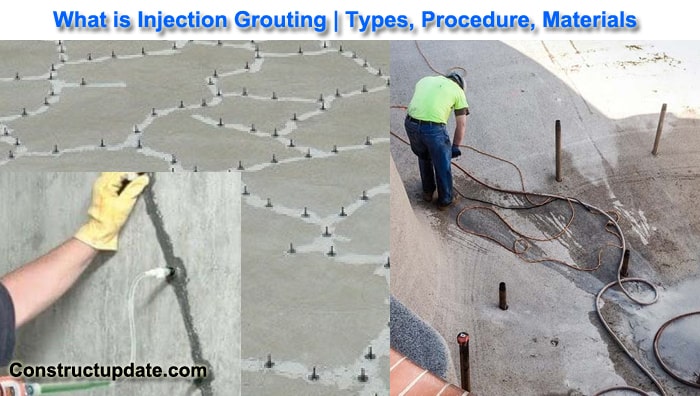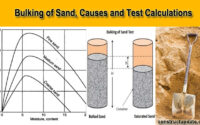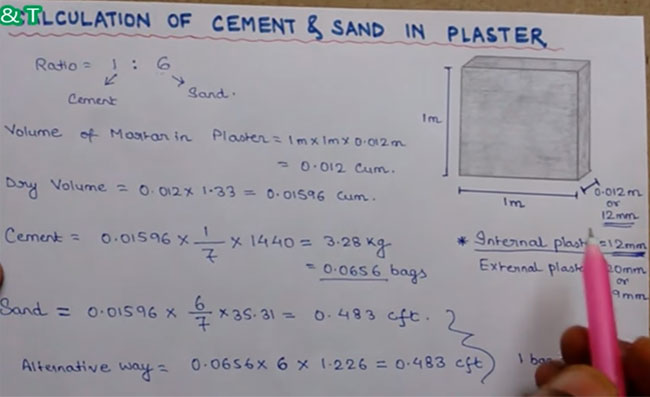Injection Grouting Types, Procedure, Application, and Advantages
What is Grouting?
Injection Grouting is the practice of filling cracks and voids in structural parts under pressure in order to repair cracks and strengthen damaged or degraded masonry structures.
During the grouting process, cracks and cavities are filled with grouting material, which is then solidified.
The procedure of injecting grout is similar to that of injecting epoxy.
Grout is a flowable plastic material with minimal shrinkage that is extensively used for thoroughly filling spaces or gaps and remaining stable without cracking.
Grounds come in a variety of sorts and are used to repair and strengthen masonry structural elements.
The compatibility of the grout with the original material determines which types of grout should be used for masonry repair work.

Different Types of Injection grouting:
Cement sand grouting:
Cement sand grout is one of the most common and commonly used groutings for concrete and masonry repairs.
This grout is utilised in situations when structural strength isn’t a priority. It’s simple to use and widely available on the market.
The cement and sand grouting procedure necessitated a larger water and cement content. When using cement sand grout, the grout will shrink and crack during the hardening process.
Fiber reinforced injection grouting:
This sort of grouting is used in the structural components of concrete and masonry work. Different fibres, such as steel, glass, or polypropylene, are blended in a predetermined ratio with cement or mortar. It enhances ductile strength, impact resistance, and ductility by having substantially stronger hardening characteristics. Fiber-reinforced injection grouting necessitates expert handling to avoid fibre disintegration. Fiber-reinforced grout is the greatest option for increasing a structure’s flexural strength.
Polymer based injection grouting:
Polymers such as vinyl ester, polyester, epoxy, resins, and polyurethane are used in this grouting, as the name implies. Epoxy resin is the most extensively used polymer because of its strong binding and sealing qualities. Epoxy resin can be used to repair practically any form of crack, whether it’s on the surface or underneath. Acrylic resin and polyurethane are recommended for water-related structures such as pipelines because they offer good water impermeability and chemical resistance. They are made up of two or three components with different qualities. Curing agents and modifiers are used to change the consistency or desired property of polymers. In general, polymer injection grouting is available in epoxy, acrylic, and lignosulfonate bases.
Gas forming grouts:
The concept behind the usage of gas-forming injection grout is that the gas bubbles expand the grout to compensate for shrinkage after application. The reaction of some chemicals (typically Aluminum and Carbon powder in grout) with the cement liquid produces these gas bubbles. Gas bubble forming injection grouts are not suitable for high-temperature applications that require sufficient confinement to develop strength and volume stability because the reaction producing gas bubbles may be too fast and complete before the grout is applied.
Sulfo-Aluminating grout:
The shrinkage compensation principle is widely exploited in the sulfo-aluminate additive or shrinkage compensating cement used in this grout. The additive is combined with Portland cement and water, causing the additive to expand. Because this grout is water-sensitive, wet curing and post-hardening treatments are required.
Grouting Procedure:
- Drilling surface holes or ports
Drilling holes or ports into cracks or gaps to serve as entrance points creates small venting terminals. The depth and spacing between the drills can be changed to suit your needs. Epoxy or acrylic resin is used to seal the cracks that developed during drilling.
- Drill holes and cracks should be cleaned
Clean the drills by running water through them to wet the internal surface for proper grout flow and binding, as well as to determine the pattern of voids.
- Grouting hose connection
In grouting, hose connections are done with a cone-shaped grout hose at maximum pressure. For this purpose, short nipples or gasket devices can also be employed.
- Injection grouting in the cracks
Begin grouting at one vertical or horizontal end and work your way to the next drill until the grout bulges out. Replace the bulged drill, then move on to the next step and repeat.
Grouting Material:
Grouting material properties
- The grouting substance should be non-shrinkable.
- When the grouting material is filled in the cracks or spaces, it should expand.
- Compressive loads should be able to withstand the grouting material.
- It should have a high tensile strength and be resistant to vibration.
- It should be easy to apply and abundant in moisture entry.
Injection Grouting Advantages:
- Because supplies are widely available, injection grouting is a simple process.
- Grout and the grouting process are both cost-effective.
- It is a very environmentally friendly procedure that does not harm the environment in any way.
- Injection grouting is a simple way to repair cracks and fill voids in all structural members, including concrete and masonry.
- It can provide stability and strength to your structural parts, particularly masonry structural members.
- When you use the proper injection grouting process, there is very little waste.





